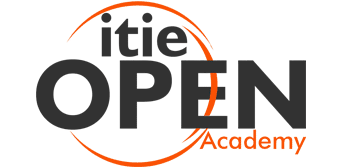Texas Instruments DSP Processors 6713/ 6416 CCS
This course is mainly deals with programming on TMS320C6713/TMS320C6416 DSP Starter Kit (DSK) using CCS, which is a low-cost development platform designed to speed the development of high precision applications based on TI´s TMS320C6XXX floating point DSP generation.
| COURSE CONTENT : |
| Introduction to MATLAB(R) |
- Quick overview on MATLABâ architecture and computing environment
- Data types and operators in MATLABâ
- Array and matrix operations
- Functions
- Structures
- Plots
|
| Introduction to Digital Signal Processing |
- Introduction to signals and systems
- Sampling and Quantization
- Overview of Digital Signal Processing
- Windowing Techniques
- Filtering
|
| Introduction to DSK |
- Why Special Purpose processor for DSP
- History of TMS Series
- What is Code Composure Studio
- Difference Between Floating and Fixed Point Processors
- An Introduction to TMS320C6713
- An Introduction to TMS320C6416
|
| DSK(TMS320C6X) Architecture |
- Von Neumann Architecture and Harvard architecture
- Concerns on Fixed Point Processors (Quantization Error )
- Functional Units
- Pipelining
- Registers
- Interrupts
- McBSP’s
- DMA
|
| Hands on DSK |
- Introduction to CCS
- Quick Test of DSK
- Difference between Compiler, Linker, Assembler
- Detailed Explanation of Support Files
- Building a small Project ( hello world)
- Generation of Sinusoid using DIP switch and explanation of the program
- Illustration of Watch Window, GEL file
- Few Experiments on Sine generation program using DIP Switch
|
| Plotting with CCS |
- Generation of Sine and Plotting with CCS
- Usage of Circular Buffer
- Usage of Hardware Interrupt int_11
|
| Profiling with CCS |
- Dot Product of Two Arrays
- Implementing Variable watch
- Setting up Break Points
- Profiling Printf function
|
| Real Time Implementation |
- Input with Onboard AIC23 Stereo Codec
- TLV320AIC23 Onboard Stereo Codec
- Example Program to Illustrate onboard Stereo Codec using Hardware Interrupt and explanation of the program using McBSP’s.
- Example Program to Illustrate onboard Stereo Codec using polling and explanation of the program using McBSP’s
- Example program to illustrate Multi Channelled McBSP’s.
- Examples Illustrating Echo and Delay
- Example illustrating sine generation using table created by MATLAB(R)
- Few assignments (Square generation and ramp generation using table created by MATLAB and CCS plotting
|
| Real time Implementation |
- Generation of amplitude Modulated signal using C6713 DSK
- Generation of Pseudorandom Noise using C6713 DSK
- Recording Voice using external Memory(SDRAM)
|
| FIR filters |
- Implementation using Pseudorandom Noise sequence as input to filter and output stored in memory
- Two Notch filters recovering the Corrupted Input
- Voice Scrambler using Filtering and Modulation
- Real Time Convolution
- FIR Implementation of LP HP BP BS Using DSK 6713 DSK
- FIR
|
| IIR and Adaptive Filters |
- IIR filtering using cascaded direct form -II
- Adaptive Filters
- What is Adaptive Filter
- Application of adaptive Filters
- Least Mean Square Algorithm and RMS
- Noise Cancellation , System Identification
|
| Implementation of Adaptive Filters
|
- Implementing Adaptive Filter for sinusoidal Noise cancellation on DSK 6713
- Adaptive FIR Filter for System ID of a Fixed FIR as an Unknown System
- Adaptive FIR for System ID of a Fixed FIR as an Unknown System with Weights of an Adaptive Filter Initialized as an FIR Bandpass-Plotting with CCS
- Adaptive FIR for System ID of Fixed IIR as an Unknown System
|
| DSP/BIOS |
- What id DSP BIOS?
- Uses of DSP BIOS
- Sine Generation with DIP Switch Control Through DSP/BIOS
- Blinking of LEDs at Different Rates Using DSP/BIOS
- Sine Generation Using BIOS to Set Up Interrupt INT11
|
Matlab® is a registered trademark of MathWorks Inc. Any other products are their respective owners.

